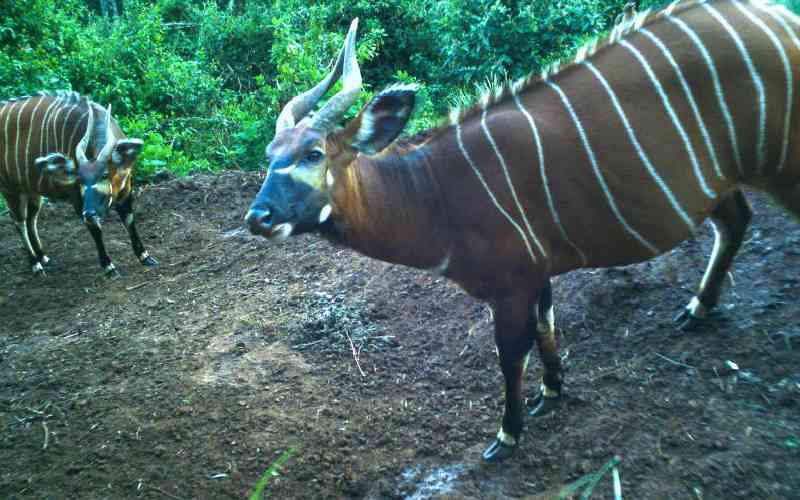Natural ecosystem is made up of both living and non-living entities coexisting with one another in a well structured environment.
Living systems constitute the biological community; human beings, animals, birds, microbes and plants. Humans, being the most advanced class, exercise control and influence over other living classes. The interaction between humans and the other living systems, especially animals, has contributed remarkable benefits to mankind. Conversely, the relationship has also subjected humans to untold suffering, with zoonoses, a group of diseases caused by germs that spread from animals to persons, at the centre stage. To lay it bare, zooneses account for 60 per cent of infectious diseases afflicting humans.
Mankind’s activities have increasingly disrupted the structure and organisation of the natural ecosystem at a rapid rate. These activities have by all standards severely disturbed the unbound richness of the ecosystem.
Since time immemorial, humans have been engaging in such practices with simple tools. However, over the years, with advantages of science and technology coupled with dramatic increase in global population, sophisticated tools have been developed to exploit the diversity of the ecosystem on a grand scale. Among the ecosystem, tropical forests are the richest. As a result, they have been targeted for exploitation. While the inhabitants of such forests are creatures known to science, some, in fact most, have not been discovered.
These creatures include disease-causing germs such as viruses, bacteria, fungi, and other organisms a majority of which are parasitic. Viruses, in particular, are of a special interest because they lack the ability to live independently. Instead, they live dependently within one kind of bacteria, fungi and even plants for their nourishment, with little or no disturbance. As a result, they have been implicated in the most catastrophic pandemics in the history of mankind.
Human-driven activities, for instance unconventional eating of wild animals and cutting of trees, not only contribute to the destruction of the ecosystem, but serves to increase the frequency with which these disease-causing germs are released from forests into the wider and unfamiliar human surrounding. Hungry and deprived of their natural home, these germs have two choices, to go extinct or to look for a new shelter and adapt living in it. Humans, now in billions, are just ubiquitously available and offer favourable breeding ground for germs to thrive. The consequence of this new-found relationship is inevitably devastating to humans.
A unique feature of these pandemics is that they are caused by viral germs that jumped from animals to a person, following human interference. The Human Immunodeficiency Virus (HIV), for example, the causative agent of Aids, originated from chimpanzee, while viruses responsible for Ebola virus disease, SARS and Covid-19 outbreaks, were traced to bats. The H1N1 influenza A virus that led to the Spanish flu pandemic of 1918 was harboured by wild aquatic birds. Importantly, these creatures are in their rightful place in the food chain. Human activities have, however, disturbed their cohesion, resulting in infectious disease outbreaks, most of which mounted to pandemics.
Even as constant international travel, the widespread urbanisation, and the impact of globalisation continue to rise, failure to control manipulation of the ecosystem will lead to future pandemics, which could even be more lethal. There is a need, therefore, to strengthen surveillance and health operations in areas prone to outbreaks, such as wildlife markets, wet markets in China and bush meat markets in Africa, to prevent future outbreaks.
- The writer teaches Biochemistry at Moi University. [email protected]
 The Standard Group Plc is a
multi-media organization with investments in media platforms spanning newspaper
print operations, television, radio broadcasting, digital and online services. The
Standard Group is recognized as a leading multi-media house in Kenya with a key
influence in matters of national and international interest.
The Standard Group Plc is a
multi-media organization with investments in media platforms spanning newspaper
print operations, television, radio broadcasting, digital and online services. The
Standard Group is recognized as a leading multi-media house in Kenya with a key
influence in matters of national and international interest.
 The Standard Group Plc is a
multi-media organization with investments in media platforms spanning newspaper
print operations, television, radio broadcasting, digital and online services. The
Standard Group is recognized as a leading multi-media house in Kenya with a key
influence in matters of national and international interest.
The Standard Group Plc is a
multi-media organization with investments in media platforms spanning newspaper
print operations, television, radio broadcasting, digital and online services. The
Standard Group is recognized as a leading multi-media house in Kenya with a key
influence in matters of national and international interest.








